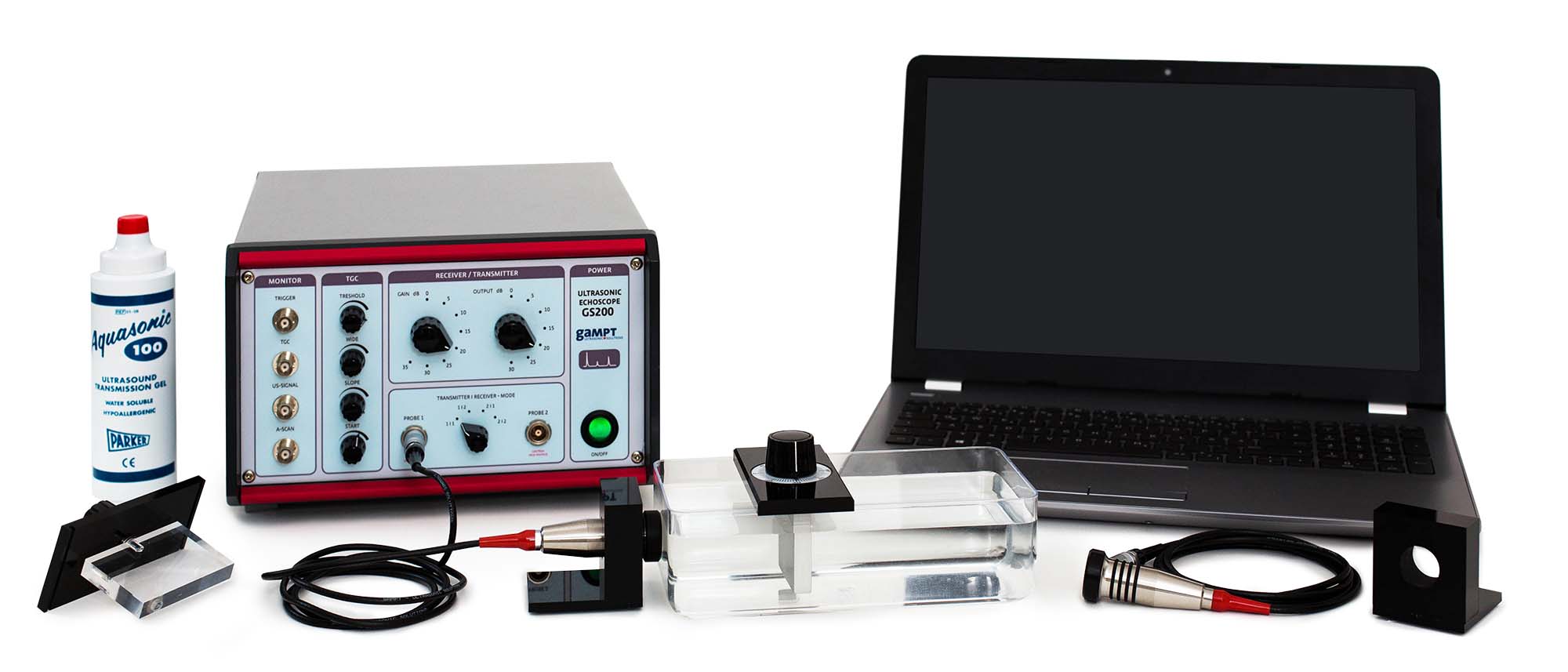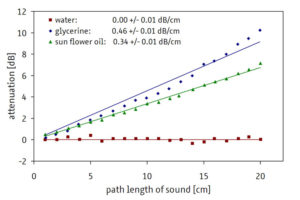Article No. VK-PHY04
PHY04 Acoustic attenuation in liquids
Investigation of the acoustic attenuation in different liquids in dependence on the sound path
- Subject matter of the experiment
- Theoretical and practical aspects of the experiment
- Results
- Equipment
- Related Experiments
In the experiment, the attenuation of sound waves in different liquids in dependence on the sound path is investigated. For each of the liquids the acoustic attenuation coefficient is determined by linear regression.
Keywords: Sound propagation in liquids, longitudinal waves, reflection, absorption, scattering, acoustic attenuation in liquids, attenuation coefficient
In gases and liquids sound propagation takes place in the form of longitudinal waves. Here, the sound waves can lose energy on their way through the liquid through absorption, reflection or scattering. In addition to these, sound field geometry can also influence acoustic attenuation. In the experiment, the amplitudes of the reflection echoes from a simply movable sound reflector made of aluminium are measured. Due to its shift in the liquid to be investigated, the amplitude values for a large number of different sound paths can be quickly ascertained using the pulse echo method. The attenuation of the signal amplitude A can here be described by the general law of attenuation A = A0 · e-αx. For two different sound paths x1 and x2 the following linearised form results: 2 · Ln(A2/A1) = α · (x1 – x2). The attenuation coefficient a of the respective liquid can thus be determined by a linear regression via the measurement points in the attenuation sound path diagram.
In the experiment acoustic attenuation is investigated in the examples of water, a commercially available sunflower oil and glycerine (86.5 %). The diagram shows the measurement values with the regression lines for determining the acoustic attenuation coefficients a. At the used frequency of 2 MHz, the measurement with water shows no measurable attenuation, so the influence of sound field geometry can be regarded as negligible for the measurements in the experiment.
| Ord.no. | Description |
|---|---|
| 10400 | Ultrasonic echoscope GS200 |
| 10152 | 2 ultrasonic probes 2 MHz |
| 10218 | Shear wave set |
| 70200 | Ultrasonic gel |

